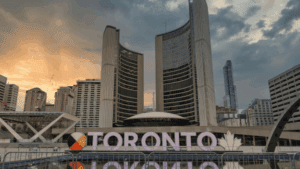2020 will undoubtedly be remembered as a year marked with unprecedented events and a year where everyone was trying to make their way through unchartered territory. It is no secret that Covid-19 has proved to be stressful for many. We have not experienced a pandemic of this scale in our lifetime. As a result, so many questions were raised at the outset of the pandemic.
Questions about various aspects of the economy including the real estate market. Without a map to guide us, there have been many shifts in the way we go about our day to day. It has truly been a new normal.
The economy and specifically the real estate market has seen some changes that have been a direct result of the adaptive process towards Covid-19. These changes have had an overall impact on Ontario homeowners and Ontario based lenders.
At the start of the epidemic, there were real fears among Ontario homeowners and real estate professionals concerning the potential ramifications that Covid-19 would have on the housing market. Most predicted a negative effect that could lead to large numbers of mortgage defaults and many properties falling under power of sale.
In direct response to the potential looming crisis, the Bank of Canada and the Federal Government stepped up to help Ontario homeowners and lenders inoculate temporarily from the real threat of potential large scale mortgage default.
Covid-19 Mortgage Deferrals
In the early stages of the Covid-19 pandemic, the major banks announced that they were permitting the deferral of mortgage payments for 6 months to help ease the economic stress felt by Ontario homeowners. The Government of Canada also announced in early Spring of 2020 that it would provide 150 billion to be put towards mortgage-backed securities.
This substantial Government cash infusion into the real estate and mortgage market helped significantly, allowing banks to offer deferral options. It also helped stabilize mortgage interest rates ensuring that mortgage rates remained competitive.
As of September, it was clear that just under 800,000 Canadians had applied for deferred mortgage options. According to the Canadian Mortgage and Housing Corporation (CHMC), the mortgage deferrals represent approximately 1 billion dollars a month of deferred mortgage debt. The numbers indicate that roughly 1 in 6 Canadian homeowners took advantage of these broad mortgage deferral programs offered by the banks and credit unions.
These numbers are substantial and the amount of money that the Government provided the real estate sector helped to offset a ripple effect of potential defaults across Ontario and the country as a whole. The good news is that not only did these unprecedented measures help to alleviate short-term economic insecurity, but the vast majority of Canadian homeowners have made a relatively smooth transition back into paying their regular monthly mortgage payments.
Mortgage Rates In Ontario
In the early Spring of 2020, there were considerable interest rate fluctuations in the market due to Covid- 19. For example, some Ontario homeowners with a variable mortgage with a discount rate saw a significant rate and payment drop in the early Spring. A direct effect of measures taken to prevent the negative economic impact of Covid-19 on the real estate sector.
During this period, The Bank of Canada (BOC) stepped in and cut the overnight rate (the key lending rate) from 1.75 percent to a historically low rate of 0.25 percent. The Bank of Canada did not stop there. The BOC bought up billions of dollars of Government Bonds to the tune of roughly 156 billion representing near a third of the bond market. The year ended with not only historically low-interest rates as dictated by the dramatic cut in the BOC’s overnight rate, but also, year-end saw the 5 year Government Bond down 130 basis points. The 5 year Government bond is viewed as the benchmark for fixed-rate pricing.
These dramatic measures and drops in interest rates affected Ontario homeowners who held both fixed and variable mortgages. A variable mortgage lending rate is directly affected by changes to the BOC’s key lending rate and fixed mortgage rates are determined in large part by the Bond Rate.
As a result, Ontario homeowners started to see mortgage rates fall on most types of mortgage arrangements. The decline in interest rates for most mortgages has fallen to below 2.00%. These numbers represent historically low numbers. In the first year of 2021, we have witnessed interest rates on some mortgage arrangements with a 0.99 percent interest rate according to statistics recently provided by CHMC.
Real Estate Market Conditions
So it is curious that despite facing arguably the worst circumstances economically due to the ongoing Covid-19 pandemic, the real estate sector has for the most part benefited. Ontario homeowners have been able to take advantage of historically low-interest rates on their mortgages, whether they be fixed-rate or variable mortgages.
Furthermore, lenders have also been given economic help to help ease the short term economic impacts resulting from the pandemic. This Government cash infusion helped to divert a potential collapse in real estate prices due to the fear of potential large-scale mortgage defaults across the country.
It is contrary to what some real estate experts had predicted. The real estate sector is doing extremely well. 2020 saw very few mortgage defaults and property prices continued to appreciate despite many job losses and hits to the overall economy.
The average house price appreciation has gone up by double-digit numbers resulting in a higher overall house price across the country than was the case going into 2020. House prices are predicted to rise further as we embark on 2021. This is coupled with the real estate sector escaping what could have been a potential full-scale temporary collapse.



